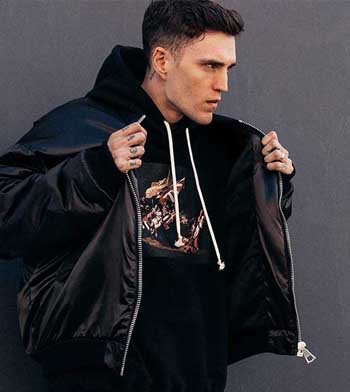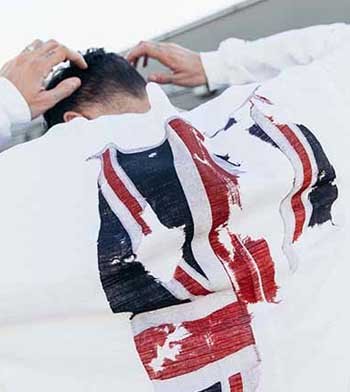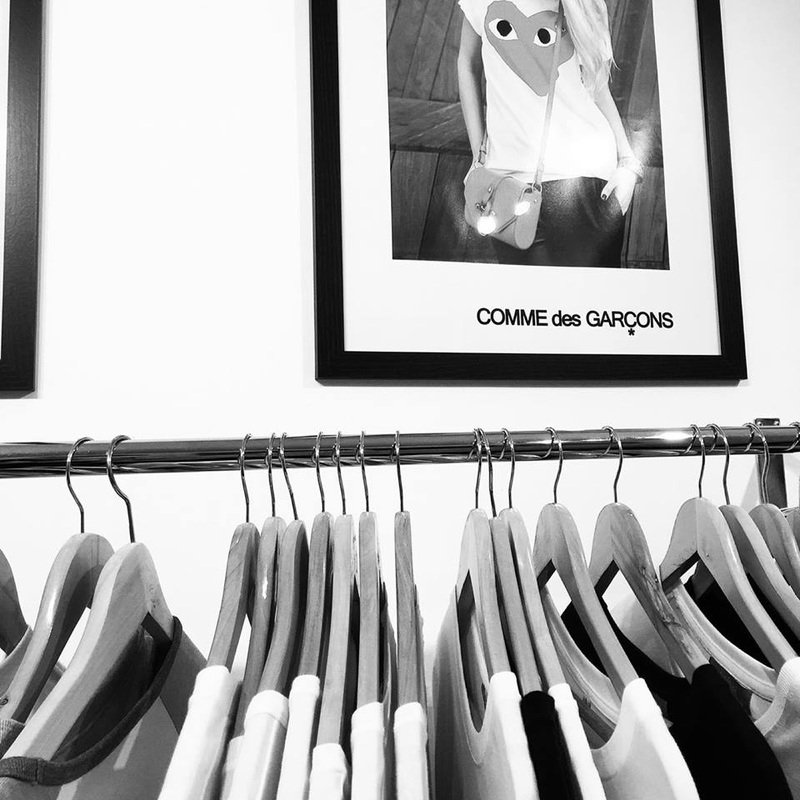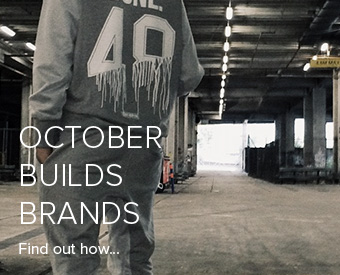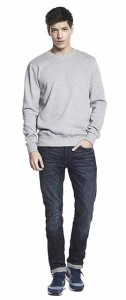
HEAVYWEIGHT, SEMI FITTED, SWEATSHIRT
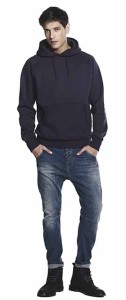
HEAVYWEIGHT, SEMI FITTED, POUCH POCKET HOOD

HEAVYWEIGHT SEMI FITTED, ZIP HOOD
We’ll look at these two together perhaps, because deciding how to choose a sweatshirt, or a hooded sweatshirt only has one variable – and it’s called er, a hood. Other than that the same questions apply to both garments, fit, weight, fabric, texture and construction, so maybe let’s not get any trickier than necessary.
Compromise.
When we talked about how to choose a T shirt, we introduced the idea of compromise in the face of all the weights, cuts and fabrics available, but when it comes to sweatshirts and hooded sweatshirts, we’re not going to be so open to variation. We might be a bit stubborn and unreasonable, and just recommend the best option.
Fit – semi-fitted, standard.
Fit – whether they are semi fitted or a more standard cut, this is the first area we’re not going to be flexible about. The only time we’d recommend a standard cut is for workwear, when a right old selection of sizes is required, just in case we’re kitting out the lads at the pie factory. For all other uses we’d go semi fit, mainly to avoid the baggy sided, ballooning sleeve effort, that is the poorly fitting sweatshirt or hooded sweatshirt. Get this wrong, and we’ll look like we’ve been thrown in a big fleecy bag, and then kicked around the car park for fun. They need to fit!
Weight – light weight, mid weight, heavy weight, and grams per square metre (gsm)
Sweatshirt fleece fabric weight is measured in grams per square metre, or gsm, just like a T shirt, where a lightweight sweatshirt might be 220 gsm, a mid-weight 300 gsm, a heavy weight 400 gsm. You could argue that the light weight or mid weight summer sweatshirt or hooded sweatshirt has its place; although where exactly that is in the British fridge is sometimes in doubt. They would tend to be more fitted, soft, textural pieces, to throw over a T shirt on the way back from doing a full cocktail menu at the beach bar. Generally though when it comes to a hood or sweat, we want to be in no doubt that it’s a properly expensive thing. On that basis we always say ‘the heavier the better’. Feel free to disagree, if you enjoy being wrong.
Fabric content – 100% cotton, 50/50 cotton poly, 80/20 cotton poly.
We’ll confess a leaning towards the 100% cotton lovelies, but they’re not always the easiest to find. There are plenty of 80/20’s about though, and we wouldn’t dilute the cotton any more than that for anything fashion based. The only time you might consider a 50/50 is if it’s for workwear, and a really good colour fastness is required during multiple hot washes. If boiling the sweatshirt or hooded sweatshirt up like a bag of old Brussel sprouts isn’t an issue, go 80/20. The only other fabric question is would you like it brushed, or un-brushed? Un-brushed, or loop back as it’s often known, can be preferred by the fashion types with its cleaner looking, non-fluffy insides. The sweat fleece fabrics that have had a damn good brushing however, will give an increased sense of weight. Fabric brushing is a real skill – happy to bore you to death with that one, feel free to give us a shout – 0115 9585000
Texture – peachy, carbon sueded?
What does my sweatshirt or hooded sweatshirt feel like, is it nice and peachy, and has it been carbon sueded? In fact, what the hell is carbon suedeing? Texture in all things is rather important. We want a heavy fabric for sweatshirts and hooded sweatshirts as a rule, but sometimes we want a crisp Scandy look, nice and minimal, and then again we might want something a bit heavier but vintage, soft, and with distress. These fabrics are sometimes made more peachy feely by machinery, that creates abrasion on the top side of the fabric to give it a lovely soft feel – if you like the sound of that, ask for carbon suedeing, and we’ll try and sound knowledgeable.
Construction – how is a sweatshirt or a hooded sweatshirt built?
The biggest down side to some sweat construction, in our ever so humble view, is the narrow rib at cuff and hem. This, with a curved sleeve and body cut, gives a shape that won’t be doing us any favours. There’s an awful lot of it about. Rule one is a straight cut body and sleeve, with wide ribbed cuff and hem to elongate the silhouette and give a clean, fitted line. Anything other than that will be baggy and horrid, and you’ll be looking like a bunch of students after a three legged pub crawl.
Ethics – how many pandas were saved by using bamboo fabrics?
Probably not many as we keep using their food to make garments, but as always we will be looking for carbon neutral, organic fabrics, made under the accreditation of the Fairwear Foundation, Eco Tex 100 on dye stuffs, Soil Association accredited and without any Uzbeki cotton, maybe recycled and trucked, not flown in. Ethics and panda saving…it’s just a given, so we won’t be waving any big green flags.
To zip, or not to zip?
When wondering whether to zip, or not to zip, that is the question, be it a hood or a sweat track jacket, perhaps just be guided by the graphic. If we’ve already got a load of across the chest plastered imagery, perhaps lean towards a zip with a discreet left breast icon. If we’re happy with our left breast action and want a bit more punch, a pouch pocket hood it is, with a big brand carrier print walloped across the chest. Trust in the graphic Luke, it will guide you.


